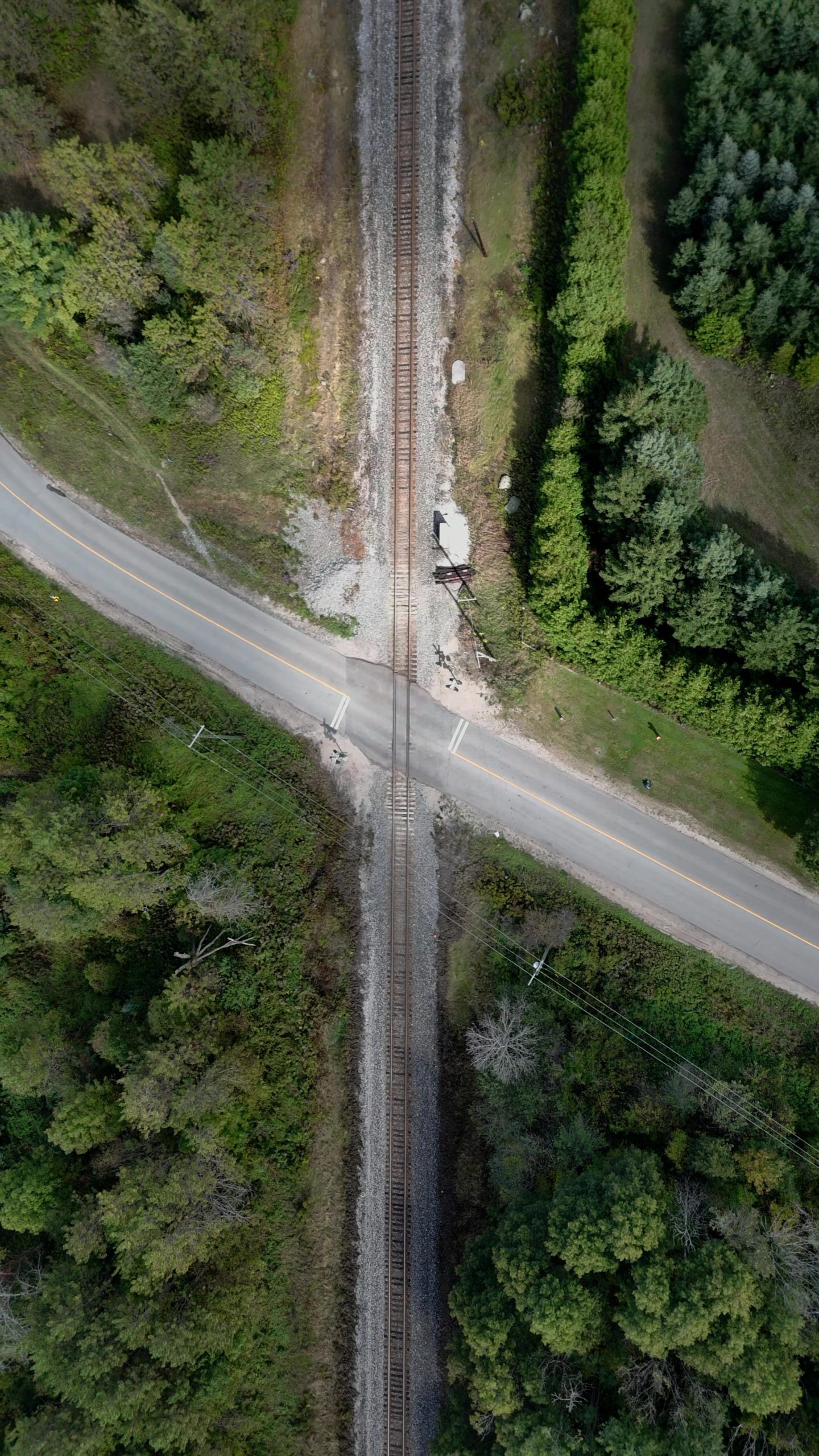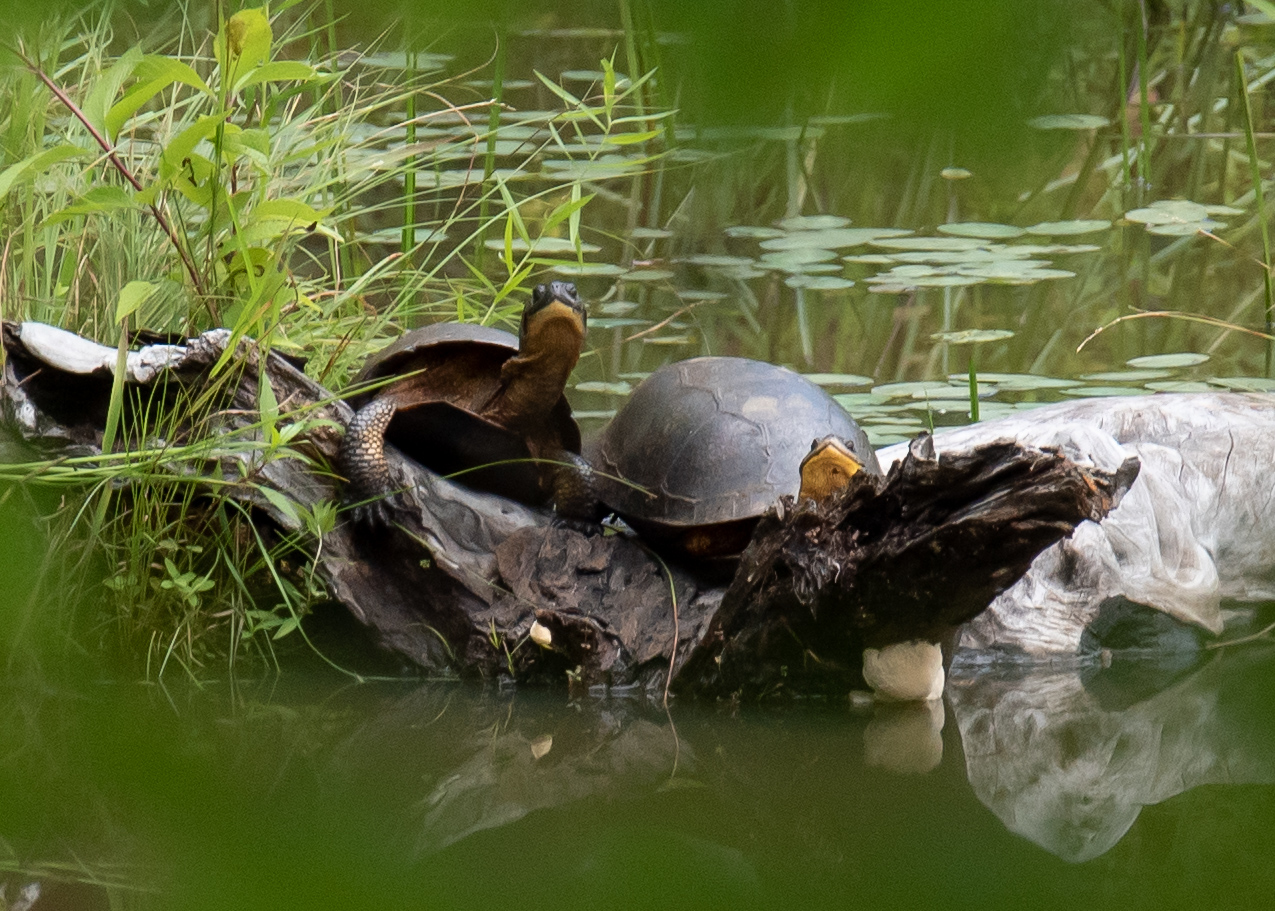At The Couchiching Conservancy, connecting landscapes through protected corridors is at the heart of our conservation work. But what exactly are ecological corridors — and why are they so important? Let’s take a closer look.
What are ecological corridors?
Ecological corridors are stretches of land or water that connect two or more natural areas, allowing wildlife to move safely between them and enabling natural ecological processes to continue. These connections can be terrestrial (land-based) or aquatic (water-based) and are essential for maintaining, or restoring, the health of ecosystems.
Why do corridors matter?
As natural spaces become increasingly fragmented by roads, development, and other human activities, it gets harder for wildlife to travel, find food, reproduce, and adapt to changes in their environment. Corridors help solve this problem by providing safe, continuous routes through the landscape. They allow species to migrate, access different habitats, and maintain healthy populations, while also supporting the movement of plants, nutrients, and water. In the face of climate change, these connected pathways are even more crucial, giving species the ability to shift their ranges and find suitable habitat as conditions change.
On this page, you’ll discover two important projects we’ve undertaken to better understand the landscape and make it safer and more connected for wildlife. Together, these efforts contribute to a healthier, more resilient natural region for generations to come.
Wild routes
Traversing the Minesing to Matchedash Corridors
In September of 2024, staff Biologist Toby Rowland did a three day trek, by foot and kayak to better understand the challenges animals might face navigating a human-dominated landscape.
This project was inspired by the vision of conservation corridors across the Couchiching region — interconnected natural spaces that allow wildlife to move between parks, reserves, and private lands. The trek explored Little Lake in Barrie to the south end of Copeland Forest.
The experience underscored the need for practical solutions, such as wildlife-friendly culverts and habitat-friendly yard practices, but also called for a deeper cultural shift: fostering empathy for other species and considering how they experience and move through the world. True conservation is as much about managing ourselves and our choices as it is about managing land and wildlife.
You can watch the full documentary below.


Eco-Passage
Whitney & McIsacc Wetland Nature Reserves
Every year, thousands of animals face a perilous journey across roads, risking their lives in the face of speeding vehicles. For salamanders, frogs, and many other species near Whitney Wetland & McIsaac Nature Reserve, this danger has been especially pronounced. Thanks to The Couchiching Conservancy’s Wildlife on Roads Community Science program, this critical issue is being addressed through the installation of our first-ever eco passage.
The journey to creating this eco passage began with our community. Volunteers participating in the Wildlife on Roads program, coordinated by our dedicated staff, logged sightings of roadkill and wildlife crossings along Monck Road. Their data revealed a “pinch point” where road mortality rates were alarmingly high. This site became the focal point of our efforts.
The planned upgrades will include retrofitting an existing box culvert with a terrestrial pathway and enhancing the surrounding area to encourage animals to use this safer route. Why is this important? Many species are hesitant to use culverts because they are unnatural structures that can feel unsafe. By upgrading the design and incorporating elements that mimic a natural environment, we can guide wildlife toward the passage—and away from the road.
Watch the video below to learn more.

